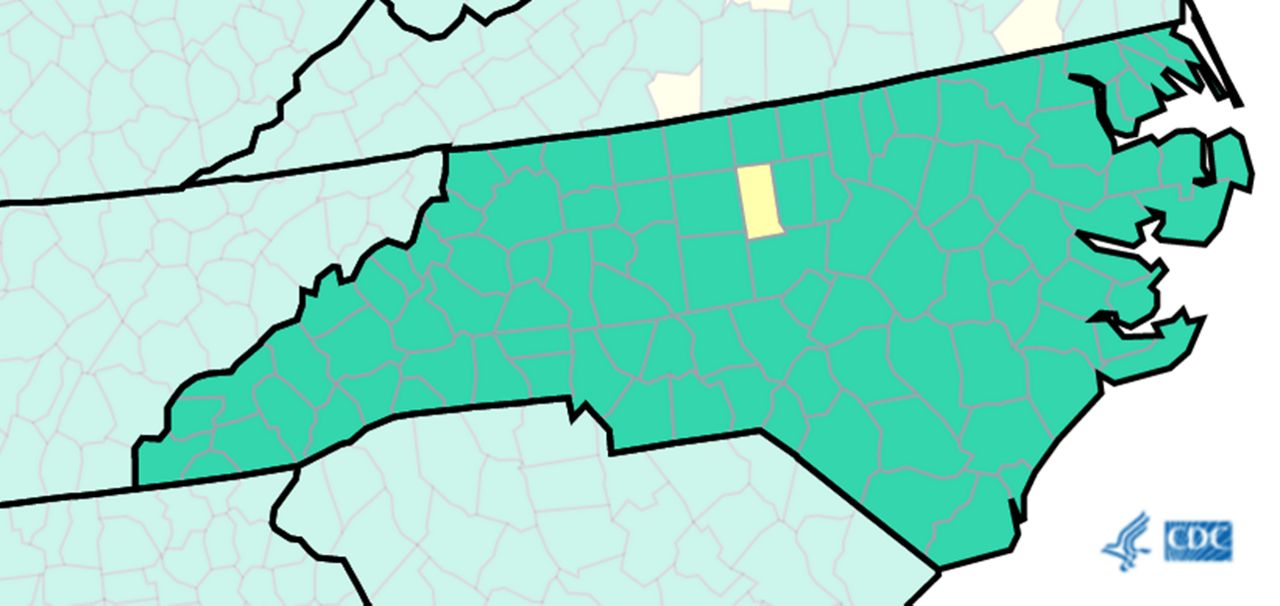Coronavirus cases in North Carolina are rising once again, fueled this time by the BA.2 variant, another in a string of increasingly transmissible COVID-19 variants. But the number of people ending up in the hospital, or dying from the virus, is lower than with earlier waves of infection.
North Carolina reported more than 17,000 new COVID cases over the past week, up from about 13,000 the week before, according to the Department of Health and Human Services. The number of coronavirus patients in the hospital went from 374 to 431, DHHS said.
“Case counts now have become somewhat unreliable because we believe people are not getting tested when they’re ill or they’re testing at home and hospitals are not able to capture that information,'' said Dr. David Priest, with Novant Health in Charlotte.
Priest said wastewater monitoring is now a more reliable way to see what’s actually happening with COVID.
In North Carolina, the number of COVID particles found in wastewater is also increasing, from 12.2 million reported last week to 14.4 million this week, according to DHHS.
The state monitors more than 20 wastewater treatment plants around North Carolina. Some of those monitoring sites, including plants that serve Wake, Mecklenburg and Buncombe counties, have seen the number of COVID particles jump by more than 100% over the past 15 days.

All but one of North Carolina’s 100 counties are still listed in the Centers for Disease Control and Prevention’s “green zone” with low community spread. Alamance County is in the “yellow zone” with medium risk of community spread, according to the CDC.
In North Carolina, almost 25,000 people have died from the virus since the pandemic began in early 2020. Nationwide, the death toll from COVID could hit 1 million later this month, CDC data shows.
North Carolina appears to be in a “mini-wave” of new cases, Priest said. But not as many people have had to be hospitalized from the most severe COVID symptoms this spring.
The number of people dying from the virus has been stable or even declining, Priest said.
CDC data shows an average of about 325 people dying from the virus each day. That’s down from more than 2,500 in January.
“We are seeing an increase in COVID cases across the country, there’s a less substantial increase in hospitalizations and a stability or decline in COVID deaths,” he said.
“This trend speaks to the fact that most Americans have some degree of immunity to COVID, either through vaccination, having had COVID, or both,” Priest said.“This trend speaks to the fact that most Americans have some degree of immunity to COVID, either through vaccination, having had COVID, or both,” Priest said.
Public health researchers at Johns Hopkins say cases have been rising again in the United States.
“Rates of hospitalization and deaths in the U.S. are climbing only very gradually despite substantial rises in cases,” Johns Hopkins’ Dr. David Dowdy said this week. That suggests, he said “the average case of COVID-19 is becoming milder.”
Dowdy said COVID-19 vaccines are still highly effective. But another surge could be on the horizon.
“Some authorities are warning a potential wave later this year could infect 100 million Americans or more,” he said.
For Priest, with Novant Health in Charlotte, the concern is other new variants coming to the United States that could get around the immunity that people have built up.
“B.4 and B.5 have the potential to avoid the immunity we’ve collectively created,” Priest said. “People are trying to put all the pieces together to make a prediction for the fall.”
“We know respiratory viruses in general tend to spread more in the fall and winter months. People are inside more, they’re in groups, they have social events,” he said.
But for the time being, case counts remain relatively low and fewer people are ending up in the hospital with severe symptoms.
“We do appear to be entering another phase in this pandemic where vaccinated people with strong immune systems are experiencing milder illness. But cases are going up again, people are still dying of COVID and we can’t rule out the possibility of a major wave in the coming months,” Dowdy said.





